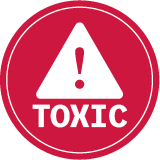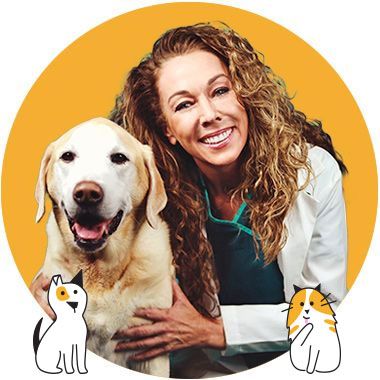Bath Time Emergency — What Is Safe for Dogs?
If bath time turns into an emergency, you have temporary options available, and they are likely in your home already. Find out what is safe (and what is not) so you will know what to do the next time your dog decides to roll in something questionable.

STORY AT-A-GLANCE
- When your dog gets filthy and you are out of shampoo, a few household products can safely work in a pinch for one-time baths
- Dog skin is thinner and more neutral in pH than human skin, making many human shampoos too harsh and irritating or drying for regular canine use
- In emergencies, diluted dish soap or castile soap can remove grease or grime, but always rinse thoroughly and never use them around your dog's eyes or ears
- Avoid products containing essential oils, fragrances, or human moisturizers; even small amounts can cause allergic reactions, itchiness, or skin damage in sensitive dogs
- Keep a spare bottle of vet-approved dog shampoo on hand to avoid future bath-time stress and protect your dog's skin health all year round
We have all been there — your dog just rolled in something that smells like death, it is 10 p.m., the pet store is closed, and, of course you are out of dog shampoo. The clock is ticking, and you are staring at the bottles in your bathroom wondering, "Can I use this on my dog?"
Before you grab your favorite human shampoo or a squirt of dish soap, stop for a moment. While some household products can work in a pinch, others can do real harm to your dog's skin and coat. Understanding what is safe and what is not can save your pup from itchiness, dryness, or worse.
A Closer Look — The Science of Canine Skin
Dogs' skin has a pH between 5.5 and 7.2, but can range up to 9.1,1,2 slightly more neutral, while human skin ranges from 4.1 to 5.8,3,4 which is more acidic. This difference helps explain why human products can upset a dog's balance. When you disrupt the skin's pH, it becomes easier for bacteria, yeast, or parasites to thrive.
The skin also has a thinner outer layer (epidermis) in dogs — about one-third the thickness of human skin.5,6 That is why dogs can absorb substances more quickly and why ingredients like fragrances or preservatives can trigger allergic responses.
Keeping your dog's skin healthy is not just about aesthetics — it is essential to their immune defense.
Why Dog Shampoo Is Different
Even though dogs are part of the family, their skin is not the same as yours. The differences in skin thickness and pH between dogs and humans matters a lot.
When you use human shampoo on your dog, the ingredients that make your hair shiny and soft can strip away your dog's protective oils. Without those oils, the skin can become dry, flaky, or itchy, and over time, your dog's natural barrier weakens. That opens the door to irritation, infections, or allergic flare-ups.7
The fact is that dog skin is not as thick as human skin, and anything you apply to it absorbs faster. Because their skin provides less protection, ingredients that seem mild to you, such as fragrances or essential oils, can be harsh or even toxic to them.8
That is why dog shampoos are carefully balanced to match a canine's skin chemistry. They are designed to clean without over-drying and to support the natural oils that keep your dog's coat shiny, healthy, and protective. Still, life happens — and sometimes you need an emergency plan.
When You Are Out of Dog Shampoo — The Safe Shortlist
If your pup needs a scrub right now and there’s no pet shampoo in sight, do not panic. A few household items can safely stand in for dog shampoo for a one-time bath only.9,10,11
- Baby shampoo: gentle but occasional — If you have a bottle of baby shampoo handy, this is usually your safest quick fix. Baby shampoo is made to be mild on sensitive skin and eyes, and it is free of harsh detergents or strong fragrances. To use it:
- Wet your dog's coat with warm water.
- Lather a small amount of baby shampoo into the fur, avoiding the eyes.
- Rinse thoroughly to remove all residue.
- Dish soap: only for disaster duty — If your dog rolled in something greasy, oily, or just plain foul, dish soap can cut through the grime. It is what wildlife rescuers use to clean oil off birds and sea creatures, after all.
However, veterinarians warn that dish soap is very stripping. It removes natural oils from your dog's coat, which can lead to dryness and irritation if used too often. Use it only for extreme messes:- Dilute a few drops of dish soap in warm water.
- Apply the mixture sparingly, focusing only on the dirty area.
- Rinse thoroughly. Soap residue can irritate the skin.
- Homemade dog shampoo mix — If you like DIY solutions, you can mix up a simple homemade dog shampoo using what you already have in your kitchen:12
- 1 quart (4 cups) of warm water
- 1 cup of dish soap, castile soap, or baby shampoo
- 1 cup of apple cider vinegar
- Baking soda: The dry "no-water" option — If your dog smells a bit "off" but is not truly dirty, baking soda can help neutralize odors without a bath. To use it:
- Brush your dog first to remove loose hair.
- Sprinkle baking soda evenly through the coat.
- Gently massage it in and let it sit for a few minutes.
- Brush it out thoroughly.
- Cornstarch: Another dry bath alternative — Cornstarch works similarly to baking soda and is especially good at absorbing excess oils and odor. Sprinkle it over your dog's coat, let it sit, then brush thoroughly.
This method is great for a quick touch-up, especially in winter when wet baths can chill your dog. But like baking soda, it is no match for mud or grime. - Castile soap: The natural cleaner — Castile soap, a plant-based soap often made with olive or coconut oil, is a gentle, natural cleanser that is safer for dogs than many synthetic soaps. It cleans effectively and leaves the coat soft and moisturized thanks to its natural oils.
However, even castile soap is not ideal for regular use since it is not pH-balanced for dogs. If you use it, rinse thoroughly and keep an eye out for any dryness or itchiness afterward. - Coconut oil: The moisturizing finish — If your dog's coat feels dry after one of these emergency washes, rub a pea-sized amount of coconut oil between your hands and massage it into their fur. It can help moisturize the skin and repel some pests naturally.
Just don't overdo it. Too much oil can make your dog greasy, and they may try to lick it off.
The catch? This works best for one-time use only. Over time, vinegar's acidity and soap or shampoo's drying power can upset your dog's skin's natural pH. See below for more information on use of castile soap.
What NOT to Use
Some products that seem safe because they are "gentle" or "natural" can actually harm your dog. Avoid these at all costs:13
- Human shampoo (even "mild" ones) — Human shampoo can wreak havoc on a dog's skin. The difference in pH between human and dog skin means that even the most luxurious salon shampoo can strip essential oils, leading to dryness, flaking, or irritation.
Some human shampoos also contain ingredients that are outright dangerous for dogs, such as: - Tea tree oil
- Citrus or citronella oils
- Parabens and phthalates
- Heavy perfumes or dyes
- Moisturizing soaps — It might surprise you, but even "gentle" bar soaps can irritate dogs. Their formulas are made for human pH and contain moisturizers that can clog pores or cause allergic reactions on canine skin.
- Cat shampoo — Cats and dogs have different skin thickness and oil composition, and products designed for one species may be too harsh or ineffective for the other. Using cat shampoo on dogs can lead to dryness, irritation, or even chemical burns.
- Essential oils — They may smell wonderful, but they can be risky for dogs. Oils like tea tree, eucalyptus, citrus, peppermint, and clove can be toxic if absorbed through the skin or licked. Even small doses can cause skin irritation or gastrointestinal upset.
Always check ingredient lists and avoid shampoos that use "aromatherapy" for dogs unless approved by a veterinarian. If you want to incorporate pet safe essential oils into your pet's care routine, talk to your integrative veterinarian about the best ways to do this.
Skin Sensitivity — Why Some Dogs React Differently
Just like people, every dog's skin has its own sensitivity level. Factors like age, breed, allergies, and even climate can make your dog's skin more or less reactive to ingredients.
- Puppies have especially delicate skin. Use only puppy-safe shampoos designed for their age.
- Short-haired breeds often have more direct skin exposure and may dry out faster with harsh cleansers.
- Dogs with allergies to food, pollen, or fleas may already have inflamed skin, making them more sensitive to substitutes.
After using any non-dog shampoo, watch for:
- Redness or pink patches
- Excess scratching or licking
- Dandruff or scaly skin
- Hot spots or hair loss
If these symptoms appear, call your veterinarian. Even mild irritation can worsen quickly.
Natural Freshening Between Baths
Sometimes, your dog does not need a full bath, just a refresh. Here are a few safe ways to keep them smelling clean between washes:
- Pet wipes or baby wipes — Use unscented, alcohol-free pet wipes or baby wipes for a quick cleanup of paws, belly, and under the tail. They are especially handy for older dogs or quick post-walk touch-ups.
- Water rinse — If your dog is just dusty or sweaty, a plain water rinse can work wonders. No soap needed. Brush afterward to distribute natural oils.
- Dry shampoo sprays — Waterless or dry dog shampoos use mild cleansers and natural scents to freshen up without stripping oils. Keep one handy for emergency clean-ups.
The Bottom Line — Prevention Is the Best Plan
It is easy to forget to buy more dog shampoo until it is too late but keeping a small backup supply can save you stress and protect your dog's skin.
Set a reminder to reorder before your bottle runs low or consider a subscription for your favorite grooming products. That way, you will always have the right shampoo on hand, made just for your dog's unique coat and skin.
Remember, your dog's skin is their first line of defense. Treat it with care, and you will help them stay comfortable, healthy, and happy — no matter how many mud puddles or mystery smells they find.
Sources and References
- 1 FlipnFetch, May 27, 2025
- 2 Can J Vet Res. 2003 Jan;67(1):56–59
- 3 Cleveland Clinic, June 29, 2023
- 4 PLoS Pathog. 2022 May 26;18(5):e1010512
- 5,7,8,11 Whole Dog Journal, September 3, 2025
- 6 Vet Res. 2021 Feb 15;52:21
- 9 Dogster, August 20, 2025
- 10,13 Pride and Groom, March 23, 2022
- 12 American Kennel Club, August 5, 2024










